John Bird BSc (Hons) CEng CMath CSci FIET MIEE FIIE FIMA FCollT9780750657785, 0-7506-5778-2
Table of contents :
Electrical and Electronic Principles and Technology……Page 1
Contents……Page 6
Preface……Page 10
Technology……Page 12
Basic Electrical and Electronic Engineering Principles……Page 13
1.2 Charge……Page 14
1.5 Power……Page 15
1.7 Resistance and conductance……Page 16
1.8 Electrical power and energy……Page 17
1.9 Summary of terms, units and their symbols……Page 18
diagrams……Page 20
electricity……Page 21
2.6 Linear and non-linear devices……Page 23
2.8 Multiples and sub-multiples……Page 24
2.9 Conductors and insulators……Page 25
2.10 Electrical power and energy……Page 26
2.11 Main effects of electric current……Page 28
2.12 Fuses……Page 29
3.1 Resistance and resistivity……Page 31
resistance……Page 33
values……Page 36
4.2 Electrolysis……Page 40
4.4 The simple cell……Page 41
cell……Page 42
4.8 Secondary cells……Page 45
4.9 Cell capacity……Page 46
Assignment 1……Page 49
5.1 Series circuits……Page 50
5.2 Potential divider……Page 51
5.3 Parallel networks……Page 53
5.4 Current division……Page 55
parallel……Page 59
6.1 Electrostatic field……Page 62
6.2 Electric field strength……Page 63
6.4 Capacitors……Page 64
6.6 Permittivity……Page 65
6.7 The parallel plate capacitor……Page 67
and series……Page 69
6.9 Dielectric strength……Page 72
6.10 Energy stored in capacitors……Page 73
6.11 Practical types of capacitor……Page 74
6.12 Discharging capacitors……Page 76
7.1 Magnetic fields……Page 78
7.2 Magnetic flux and flux density……Page 79
7.4 Permeability and B–H curves……Page 80
7.5 Reluctance……Page 83
7.6 Composite series magnetic circuits……Page 84
7.8 Hysteresis and hysteresis loss……Page 87
Assignment 2……Page 91
current……Page 92
8.2 Electromagnets……Page 94
conductor……Page 95
moving-coil instrument……Page 99
8.6 Force on a charge……Page 100
induction……Page 103
9.2 Laws of electromagnetic induction……Page 104
9.3 Inductance……Page 107
9.4 Inductors……Page 108
9.6 Inductance of a coil……Page 109
9.7 Mutual inductance……Page 111
10.1 Introduction……Page 114
instrument……Page 115
10.6 Shunts and multipliers……Page 116
10.8 The ohmmeter……Page 118
10.11 Instrument ‘loading’ effect……Page 119
10.12 The cathode ray oscilloscope……Page 121
10.13 Waveform harmonics……Page 124
10.14 Logarithmic ratios……Page 125
10.16 Wheatstone bridge……Page 128
10.17 D.C. potentiometer……Page 129
10.18 A.C. bridges……Page 130
10.19 Q-meter……Page 131
10.20 Measurement errors……Page 132
11.2 Silicon and germanium……Page 137
11.3 n-type and p-type materials……Page 138
11.5 Forward and reverse bias……Page 139
11.6 Semiconductor diodes……Page 140
11.7 Rectification……Page 142
12.1 The bipolar junction transistor……Page 146
12.2 Transistor action……Page 147
12.4 Transistor connections……Page 149
12.5 Transistor characteristics……Page 150
12.6 The transistor as an amplifier……Page 152
12.7 The load line……Page 154
12.8 Current and voltage gains……Page 155
12.9 Thermal runaway……Page 157
Assignment 3……Page 162
Formulae for basic electrical and electronic engineering principles……Page 163
Further Electrical and Electronic Principles……Page 165
13.2 Kirchhoff’s laws……Page 166
13.3 The superposition theorem……Page 170
13.4 General d.c. circuit theory……Page 173
13.5 Th´evenin’s theorem……Page 175
13.6 Constant-current source……Page 180
13.7 Norton’s theorem……Page 181
networks……Page 184
theorem……Page 188
14.2 The a.c. generator……Page 192
14.3 Waveforms……Page 193
14.4 A.c. values……Page 194
waveform……Page 198
14.6 Combination of waveforms……Page 200
14.7 Rectification……Page 203
Assignment 4……Page 206
15.2 Purely inductive a.c. circuit……Page 207
15.3 Purely capacitive a.c. circuit……Page 208
15.4 R–L series a.c. circuit……Page 210
15.5 R–C series a.c. circuit……Page 213
15.6 R–L–C series a.c. circuit……Page 215
15.7 Series resonance……Page 218
15.8 Q-factor……Page 219
15.9 Bandwidth and selectivity……Page 221
15.10 Power in a.c. circuits……Page 222
15.11 Power triangle and power factor……Page 223
16.2 R–L parallel a.c. circuit……Page 228
16.3 R–C parallel a.c. circuit……Page 229
16.4 L–C parallel circuit……Page 231
16.5 LR–C parallel a.c. circuit……Page 232
characteristic impedance……Page 245
17.3 Low-pass filters……Page 246
17.4 High-pass filters……Page 249
17.5 Band-pass filters……Page 253
17.6 Band-stop filters……Page 254
18.2 Charging a capacitor……Page 257
18.3 Time constant for a C–R circuit……Page 258
circuit……Page 259
18.5 Discharging a capacitor……Page 262
18.6 Current growth in an L–R circuit……Page 264
circuit……Page 265
18.9 Current decay in an L–R circuit……Page 266
rectangular waveform……Page 269
Electrical Power Technology……Page 270
20.2 Three-phase supply……Page 271
20.3 Star connection……Page 272
20.4 Delta connection……Page 275
20.5 Power in three-phase systems……Page 277
three-phase systems……Page 279
systems……Page 284
21.1 Introduction……Page 287
operation……Page 288
diagram……Page 290
21.4 E.m.f. equation of a transformer……Page 292
diagram……Page 294
21.6 Transformer construction……Page 295
transformer……Page 296
21.8 Regulation of a transformer……Page 297
21.9 Transformer losses and efficiency……Page 298
21.10 Resistance matching……Page 301
21.11 Auto transformers……Page 303
21.13 Three-phase transformers……Page 305
21.14 Current transformers……Page 307
21.15 Voltage transformers……Page 308
Assignment 6……Page 311
22.1 Introduction……Page 312
22.3 D.C. machine construction……Page 313
winding……Page 314
22.6 D.C. generators……Page 316
characteristics……Page 317
22.9 Efficiency of a d.c. generator……Page 321
22.10 D.C. motors……Page 322
22.11 Torque of a d.c. motor……Page 323
characteristics……Page 325
22.13 The efficiency of a d.c. motor……Page 328
22.15 Speed control of d.c. motors……Page 331
22.16 Motor cooling……Page 334
field……Page 338
23.3 Synchronous speed……Page 340
induction motor……Page 341
23.6 Slip……Page 342
23.7 Rotor e.m.f. and frequency……Page 343
23.8 Rotor impedance and current……Page 344
efficiency……Page 345
induction motor……Page 347
characteristics……Page 350
induction motors……Page 351
induction motors……Page 352
motors……Page 353
Assignment 7……Page 356
Formulae for electrical power technology……Page 357
Answers to multi-choice questions……Page 359
Index……Page 361
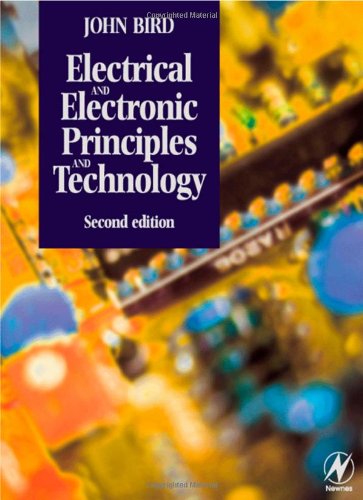
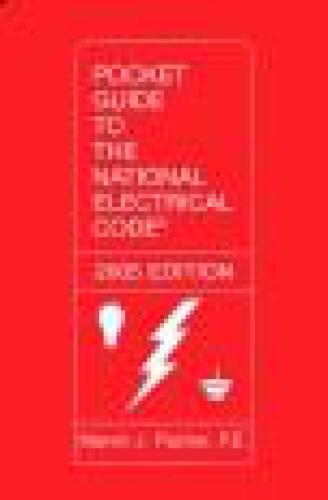
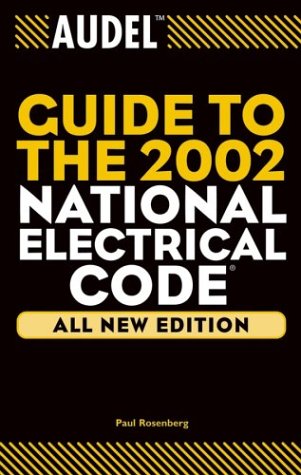
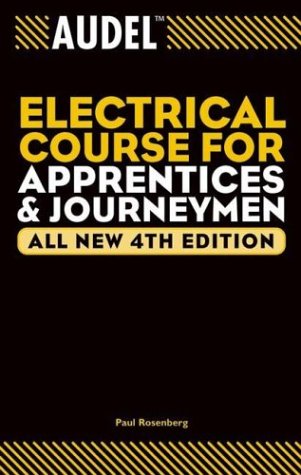
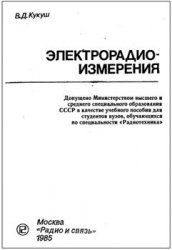
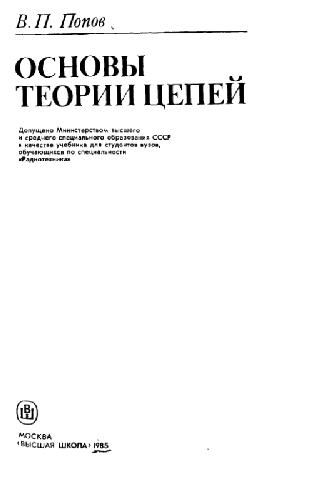
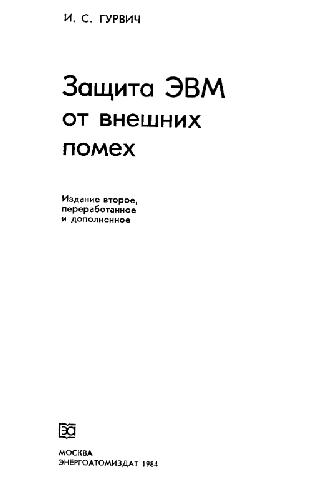
Reviews
There are no reviews yet.